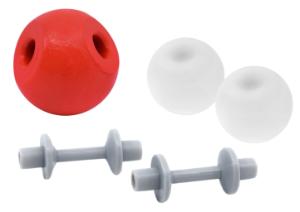Fill form to unlock content
Error - something went wrong!
Get Your Free Activity
You're in! Thanks for subscribing.
Have No Fear; Your Hydrophobic Effect Activity is Here!
Middle and High School
The only thing we have to fear is fear itself—and water if you’re hydrophobic sand. The science investigators in your class will enjoy this activity that explores what happens when this “magic” sand goes underwater.
Hydrophobia literally means “fear of water.” In 1973, Biochemist Charles Tanford popularized the term "hydrophobic effect.” Tanford described how hydrophobic (or "oily") groups "prefer" to "get away" from water while hydrophilic groups "prefer" to "dissolve" in the water.1 This simple activity demonstrates the concepts of the hydrophobic effect, hydrogen bonding and can be used to explore detergents’ effect on the surface tension of water.
Creativity and imagination will come alive as students observe the tendency of a non-polar substance, like hydrophobic sand, to aggregate in an aqueous solution and exclude the polar water molecules. As the sand repels the water and clumps together, demonstrating the concept of hydrophobic bonding, students can observe the fascinating underwater creations at the bottom of the beaker!
The activity also demonstrates ethanol's properties as a hydrophilic (“water-loving”) substance— it is miscible with water.
Download the Fear of Water activity below to help introduce students to the properties of hydrophobic and hydrophilic substances.
1. Frank Gorga, Introduction to Protein Structure, 2007.
Recommended products
[StartProductBlock]

Water Molecule Model Set
Five-part set to demonstrate the structure of a single water molecule. Includes (2) white Hydrogen balls, (1) red Oxygen ball, and (2) gray molecular bonds.
[EndProductBlock]
